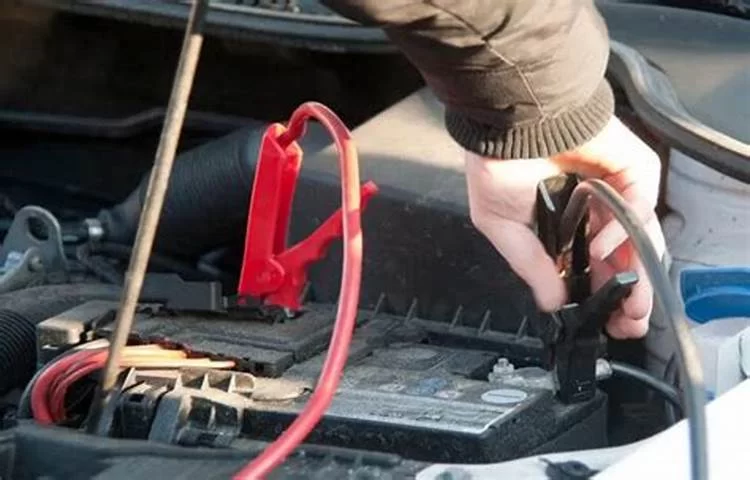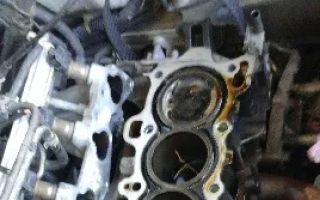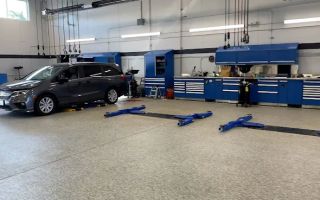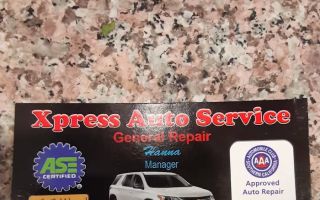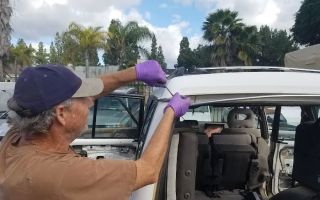Can I Jumpstart My Car in Cold Weather? A Personal Experience
It’s one of those cold, early mornings—frost on the windshield, icy roads, and the unmistakable sound of your car refusing to start. I’ve been in that situation before, and if you live in an area where winter is harsh, you’ve probably experienced it too. You’re left wondering if you can get your car going without calling for roadside assistance or dealing with a dead battery. Can I jumpstart my car in cold weather? That was the question I asked myself the first time this happened, and after some research and a bit of trial and error, I learned quite a bit about how cold weather affects car batteries and how to safely jumpstart a car in those conditions. Let me walk you through everything I discovered so you don’t have to feel stuck next time you find yourself in this chilly dilemma.
1. Understanding the Cold Weather Impact on Car Batteries
Before jumping into how to jumpstart your car in cold weather, it’s essential to understand why cold temperatures can affect your car’s battery. Car batteries rely on chemical reactions to generate electricity, and as temperatures drop, the chemical reactions slow down. This means that in the winter months, your battery has to work harder to deliver the necessary power to start your engine.
1.1 Why Cold Weather Drains Your Battery
Cold weather puts a strain on the battery, especially if it’s old or not fully charged. I learned the hard way that a battery can lose up to 60% of its power in cold conditions. This is why many people find themselves struggling to start their car when the temperatures drop below freezing. The engine oil thickens in cold weather, requiring more effort to turn the engine over, which further drains the battery. Additionally, if your battery is already weak or nearing the end of its life, cold temperatures will only accelerate the problem.
1.2 How Long Does Cold Weather Affect the Battery?
When it’s cold outside, the battery doesn’t just lose power for the moment—it can be a persistent issue. Even after the car is started, it can be difficult for the alternator to fully charge the battery, especially if the car is idling in freezing temperatures. This is why it's crucial to have a reliable battery that can handle the stress of both cold weather and the demand of starting your car. In my case, after my car wouldn’t start in the cold, I quickly realized my battery wasn’t in the best condition and needed to be replaced soon.
2. Can You Jumpstart a Car in Cold Weather? Absolutely!
The good news is that yes, you can jumpstart your car in cold weather. In fact, it’s often the best way to get your car back on the road when your battery struggles to provide enough power in freezing temperatures. The process doesn’t change much from a regular jumpstart, but there are a few things to keep in mind when dealing with the added challenges of cold weather.
2.1 Step-by-Step Guide to Jumpstarting Your Car in Cold Weather
Here’s a quick guide to safely jumpstarting your car in cold weather. When my car wouldn’t start, I followed these steps, and it worked without any issues:
- 1. Gather the necessary equipment: You’ll need jumper cables and a car with a good, fully charged battery. If you don’t have jumper cables, you can ask for help from a neighbor or call roadside assistance.
- 2. Position the cars: Park the car with the working battery close enough to your vehicle so the jumper cables can reach both batteries. Make sure the cars are turned off.
- 3. Attach the jumper cables: Start by connecting the red (positive) cable to the positive terminal of the dead battery, then connect the other end to the positive terminal of the charged battery. Next, connect the black (negative) cable to the negative terminal of the charged battery, and the other end to an unpainted metal surface on the dead car, such as a bolt or the engine block.
- 4. Start the working car: Turn on the car with the charged battery and let it run for a few minutes. This will allow it to charge the dead battery.
- 5. Attempt to start the dead car: After a few minutes, try starting your car. If it starts, leave it running for at least 20 minutes to ensure the battery gets charged sufficiently. If it doesn’t start, you may need a new battery or further assistance.
I found that when the temperatures are extremely low, it’s crucial to let the working car run for a bit longer before attempting to start the dead car. The longer you allow the charge to transfer, the better chance you have of getting your car started in cold weather.
2.2 Safety Tips for Jumpstarting in Cold Weather
While jumpstarting a car is usually straightforward, it’s important to follow a few safety precautions, especially in cold weather:
- Ensure both cars are off: Always double-check that both vehicles are off before connecting the jumper cables. This prevents electrical surges and potential damage to the car’s electrical system.
- Be cautious with frozen battery terminals: If your battery terminals are covered in ice or frost, make sure to clean them before attempting a jumpstart. You can gently scrape the ice off or pour warm (not hot) water over the terminals.
- Let the working car run longer: In cold weather, the battery’s charge may take longer to transfer. I learned the hard way that a quick jumpstart might not be enough, so I now allow the car with the working battery to run for at least 5–10 minutes before attempting to start the dead car.
3. When Should You Call for Professional Help?
While jumpstarting a car in cold weather is usually a simple solution, there are times when calling for professional help is a better option. Here are some instances when it’s wise to seek help:
3.1 If Your Battery Is Old or Weak
Jumpstarting a car will only work if the battery is capable of holding a charge. If your battery is too old or has been compromised, jumpstarting may only provide a temporary solution. In my case, after jumpstarting my car, I noticed it wasn’t holding the charge as well, and I ended up needing a new battery soon after. If your car continues to struggle to start, it might be time for a replacement.
3.2 If You’re Unable to Access a Working Car
If you’re stranded in a remote location and don’t have access to another vehicle, it’s better to call a roadside assistance service for help. I once found myself stuck on a deserted road with no one around to assist. Calling a tow service or roadside assistance is the best option if you don’t have access to jumper cables or a car with a good battery nearby.
3.3 If You’re Unsure About the Cause
If you’re not sure whether your battery or another component is causing the issue, it’s best to call a professional mechanic. Cold weather can exacerbate existing issues, and sometimes, the cause of the problem may not be as simple as a dead battery.
4. Real-Life Experience: My Cold Weather Jumpstart
Let me share my personal experience with jumpstarting my car in cold weather. A couple of years ago, during the winter, my car wouldn’t start. I tried to turn the key, but nothing happened. I quickly realized it was the battery, and I remembered my roadside assistance service. Within 20 minutes, a technician arrived, jumpstarted the car, and explained the importance of allowing the working car to run a bit longer. He also advised me to check the battery soon, as it was showing signs of age. The whole process was quick, affordable, and saved me from a stressful situation.
5. Conclusion
Can you jumpstart your car in cold weather? Yes, absolutely! With the right tools and some patience, you can jumpstart your car and get back on the road even in the coldest temperatures. However, it’s important to follow the proper steps, take safety precautions, and know when to call for professional help if the situation doesn’t improve. In the long run, understanding how to deal with a dead battery in cold weather can save you time, money, and stress. Stay prepared and safe, especially during the winter months when the risk of a dead battery is higher.

